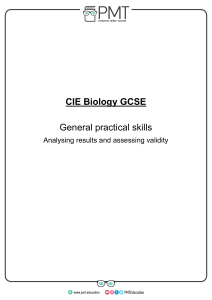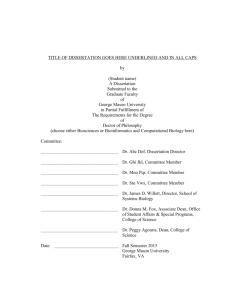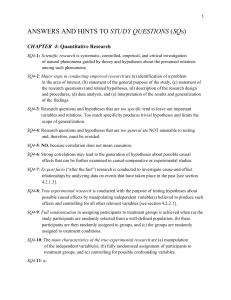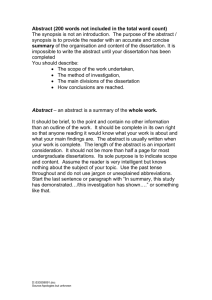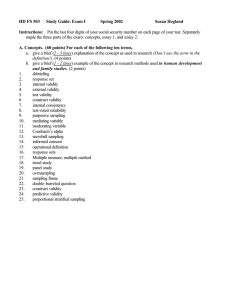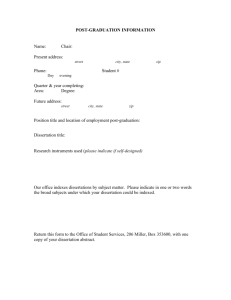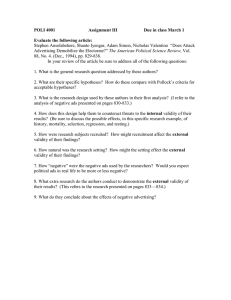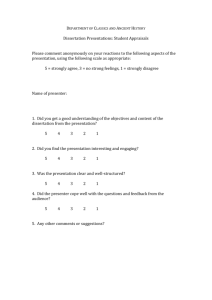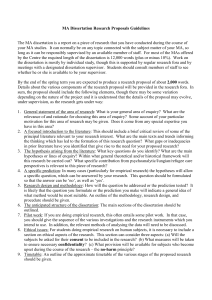Style Guide for the Applied Dissertation
advertisement
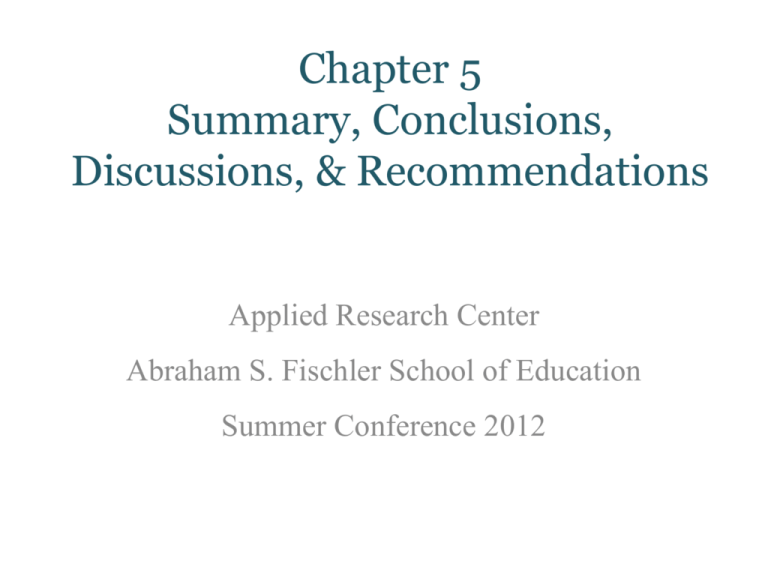
Chapter 5 Summary, Conclusions, Discussions, & Recommendations Applied Research Center Abraham S. Fischler School of Education Summer Conference 2012 General Information • This session will address the components of Chapter 5 of the Applied Dissertation. • The format and style of Chapter 5 should follow the Style Guide for the Applied Dissertation and the sixth edition of the APA manual. Chapter 5 • Purpose of Chapter 5: To provide the readers with a thorough understanding of what the results of your study mean to the research field and to professional practice. Chapter 5 Chapter 5 allows you to • summarize the findings, • discuss the importance of the findings, • place the research findings in the context of current literature, • compare and contrast the research findings with other relevant research, • identify the strengths and weaknesses of the research study, • discuss the implications of the research findings, and • make recommendations for future research. Summary of Findings • Restate the results presented in Chapter 4 using little or no statistical jargon. • Write in a clear straightforward manner with no interpretation of the results. • Use past tense. • Do not include tables and figures. • Identify whether the findings of your study supported the hypotheses or research questions. • Present unusual findings (e.g., results that you did not expect to be significant but were, and vice versa). Interpretation of Findings • Analyze both significant findings and not significant findings. • Were the results what you predicted? • Why do you think the results turned out the way they did? • Were there any issues related to sampling, measurement, and procedural issues, as well as confounding variables? • Provide possible explanations for the results. • Link the results to any theoretical framework you used to develop your research question or hypotheses. Context of Findings • Place your findings in perspective to other studies of the topic found in the reviewed literature. • How are your findings similar or different from those of other studies? • Based on the literature, are the findings what might have been expected? • If your results differ from those of other studies, what plausible explanations can account for this? Implications of Findings • How do the findings expand the understanding of the phenomenon under study? • Identify the implications of the findings for – Theory: Are findings consistent with current theories in the field? Are they consistent with the selected theoretical framework for your study? – Research: Does the study help advance the research methodology in the field? (e.g., understanding of new confounding variables, issues of measurement, issues of design) – Practice: Who may be interested in using these findings in a professional field? Why should they pay attention to the findings? Could the findings lead to changes in the way professionals “do” things? Discussion on Limitations • Review the potential limitations that you initially proposed in the proposal. Discuss the limitations that may have affected—one way or another—your findings. • Limitations typically originate in one of two sources: the study’s design and the study’s problems during implementation. • Issues of design involve decisions about sampling, assessment, procedures, and choice of research design (poor match). • Some of the issues that may have arisen at the time of research implementation relate to low sample size, measurement issues, heterogeneous groups, and so forth. Discussion on Limitations (Cont.) Think of limitations in four major areas: • Internal Validity—Unless the study is a “true experiment” one cannot claim that the IV “caused” changes in the DV. • External Validity—Discuss the extent to which findings can be generalized. • Measurement—Discuss issues of reliability and validity of assessment instruments. • Statistical Analysis—Discuss issues of power, effect size, conservative or liberal statistics, and statistical test chosen. Discussion on Future Directions • Discuss findings in light of questions or issues that suggest future research directions. • Extend the study to other populations. • Think of other IVs and DVs that ought to be explored in the field; also, think of how to assess those additional variables. • This is the section of the paper where most researchers are allowed to dream; think of extending your study to other questions that may add to the understanding of the issues. Bibliography Cone, J. D., & Foster, S. F. (2006). Dissertations and theses from start to finish: Psychology and related fields. Washington, DC: American Psychological Association. Cottrell, R. R., & McKenzie, J. F. (2011). Health Promotion and education research methods: Using the five-chapter thesis/dissertation model (2nd ed.). Sudbury, MA: Jones and Bartlett.
